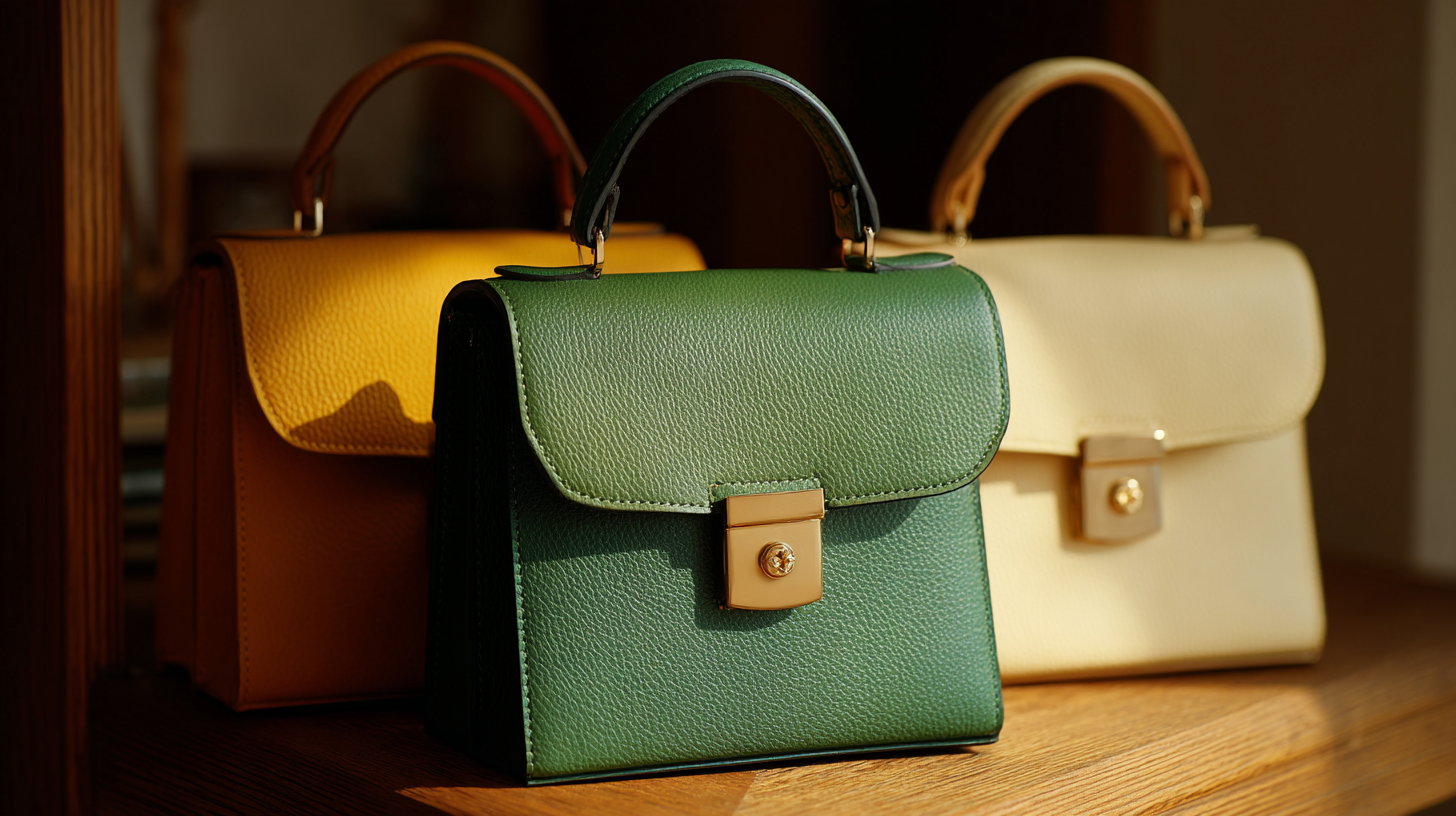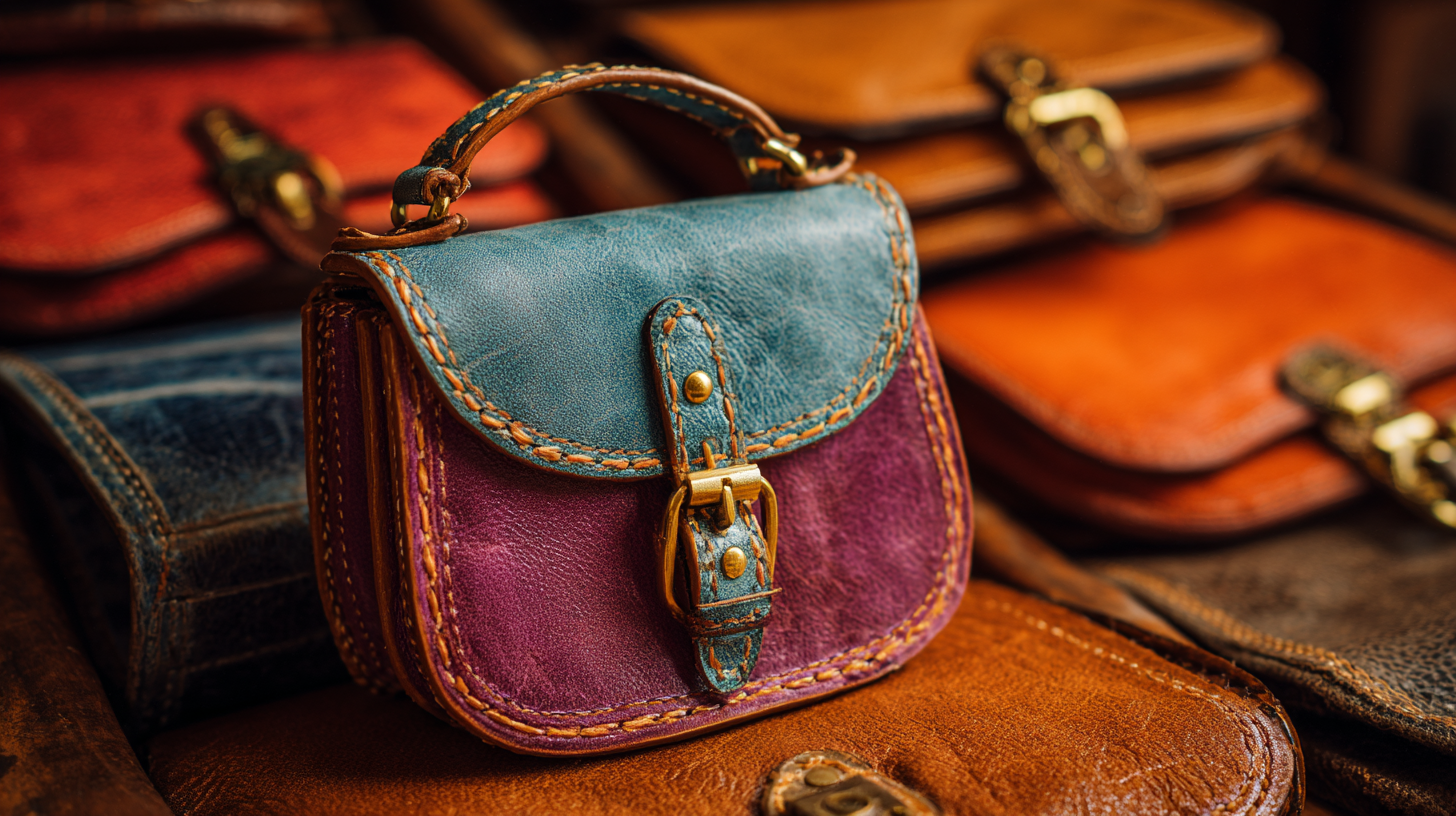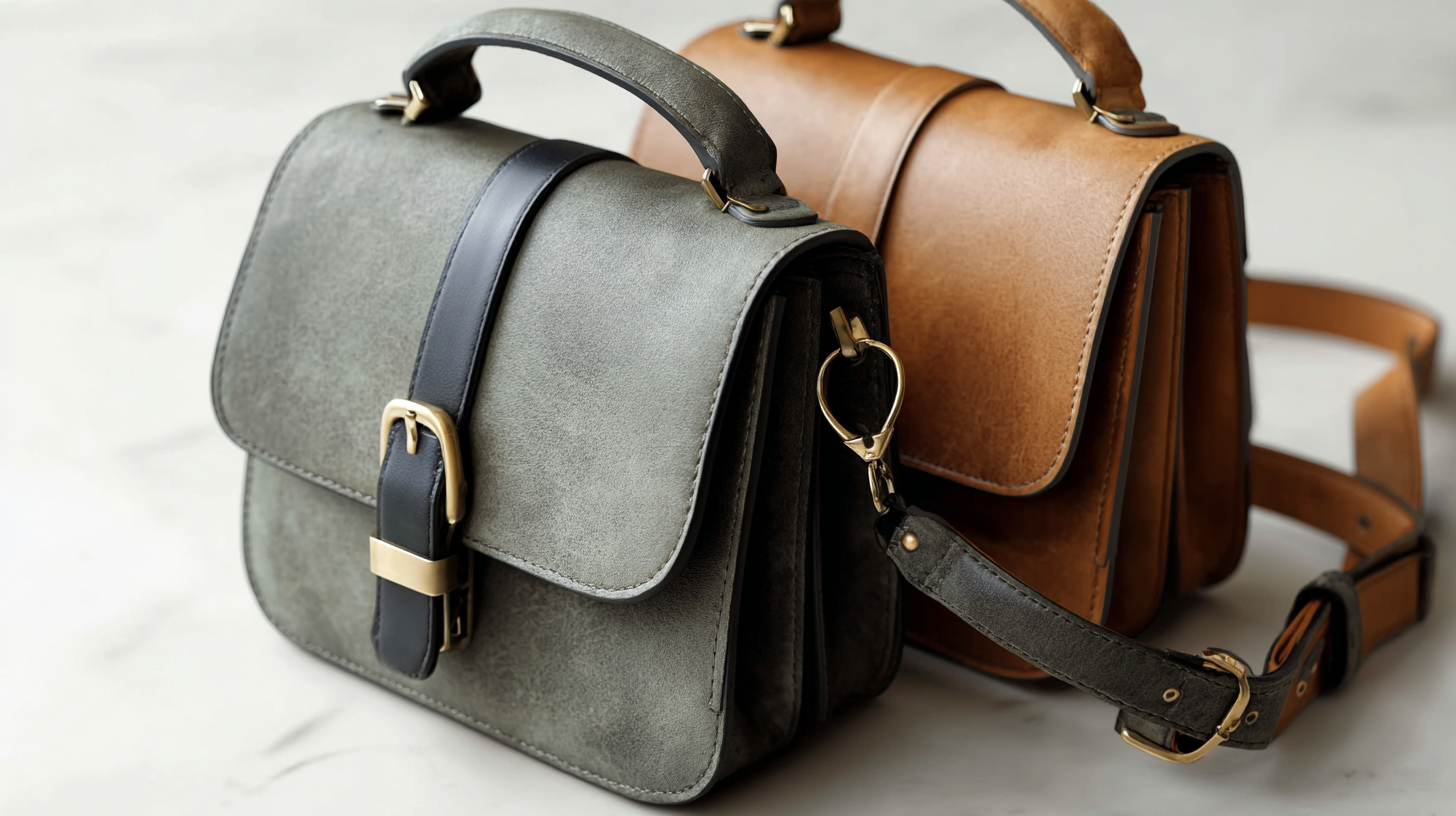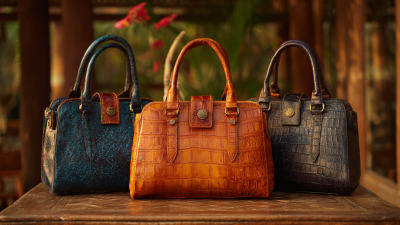The Rise of Designer Faux Leather Bags Elevating Sustainable Fashion Choices in 2023
In recent years, the fashion industry has witnessed a significant shift towards sustainability, with 2023 marking a pivotal moment for Designer Faux Leather Bags. According to a report by Grand View Research, the global faux leather market is projected to reach USD 36.3 billion by 2025, driven by increasing consumer demand for vegan and eco-friendly alternatives. As brands respond to this trend, Designer Faux Leather Bags are not only becoming more stylish but also more accessible and ethically produced. Industry leaders highlight that these bags are made using innovative technologies that mimic the look and feel of genuine leather while minimizing environmental impact. With over 60% of consumers expressing a preference for sustainable materials in their fashion choices, Designer Faux Leather Bags are elevating the standards of sustainable fashion, providing a perfect blend of luxury and responsibility for the environmentally conscious shopper.

The Popularity Surge of Designer Faux Leather Bags in 2023
In 2023, the popularity of designer faux leather bags has surged, capturing the attention of fashion enthusiasts and eco-conscious consumers alike. As sustainability becomes a priority in the fashion industry, brands are increasingly recognizing the demand for stylish alternatives to traditional leather. The rise of faux leather bags offers consumers the opportunity to express their fashion sense without compromising on ethical values. With a variety of textures, colors, and designs available, these bags make a bold statement while promoting a more sustainable lifestyle.
The influx of designer faux leather bags can be attributed to innovative manufacturing techniques that closely mimic the look and feel of real leather, making them more appealing to a broader audience. High-end brands are embracing this trend by incorporating faux leather into their collections, showcasing that luxury can coexist with
eco-friendliness. Additionally, social media influencers and celebrities are spotlighting these fashionable items, further driving their popularity. As a result, designer faux leather bags are not only transforming wardrobes but also fostering a cultural shift toward more sustainable fashion choices.
Eco-Friendly Materials: The Building Blocks of Modern Sustainable Fashion
In 2023, the fashion industry is witnessing a significant shift towards sustainability, with designer faux leather bags at the forefront. These eco-friendly materials are revolutionizing how consumers perceive luxury, allowing them to indulge in high fashion without compromising their ethical values.
Innovations in synthetic materials have led to the creation of faux leathers that mimic the look and feel of real leather while significantly reducing environmental impact. This shift not only captures the attention of environmentally conscious shoppers but also challenges traditional perceptions of quality and luxury in fashion.
As brands focus on sustainability, they are increasingly adopting eco-friendly materials as the building blocks of their collections. Recycled plastics, organic cotton, and plant-based alternatives are becoming prime choices for crafting fashionable accessories. These materials not only minimize waste but also promote a circular economy, where products are designed with their end-of-life in mind. By embracing such materials, designer labels are setting new standards for sustainable fashion, ensuring that consumers can enjoy stylish products that align with their commitment to environmental stewardship.
Top Designer Brands Leading the Faux Leather Revolution
In 2023, the fashion industry witnessed a remarkable shift towards sustainability, with top designer brands leading the charge in the faux leather revolution. Brands such as Stella McCartney and Ganni have redefined luxury by showcasing exquisite collections made from high-quality, innovative materials that mimic the look and feel of traditional leather without compromising on ethics. These fashion houses have embraced eco-friendly alternatives that not only reduce environmental impact but also challenge the notion that luxury must rely on animal products.
Additionally, other major players, including Nanushka and VEGANY, have emerged, focusing on style and sustainability. Their designer faux leather bags embody sophistication and versatility while appealing to the growing segment of conscious consumers. As these brands gain popularity, they not only elevate fashion standards but also inspire a broader movement within the industry, encouraging more brands to reconsider their material selections.
The fusion of chic design and environmental awareness makes the faux leather trend a hallmark of modern fashion, showing that luxury and sustainability can coexist harmoniously in the 21st century.
Practical Tips for Choosing High-Quality Faux Leather Products
In recent years, the shift towards sustainable fashion has become increasingly pronounced, with designer faux leather bags leading the way. According to a report by Grand View Research, the global faux leather market is projected to reach $80 billion by 2025, reflecting a growing consumer preference for ethical and eco-friendly alternatives. In 2023, these stylish accessories not only offer aesthetic appeal but also align with environmentally conscious choices.
When choosing high-quality faux leather products, it is crucial to consider their composition. Look for bags made from polyutherane (PU) as it's more eco-friendly compared to PVC, which can release harmful chemicals during production. Additionally, examine the craftsmanship; well-made faux leather should feel soft and supple, with a sturdy finish that resists wear and tear.
Another important tip is to check for certifications. Products labeled with eco-certifications, such as Oeko-Tex Standard 100, indicate that the materials used are free from harmful substances and safe for consumers. Investing in brands that prioritize sustainability not only supports responsible production practices but also ensures you're purchasing a durable and stylish product that fits into your sustainable wardrobe.
The Impact of Social Media on Sustainable Fashion Trends in 2023
The impact of social media on sustainable fashion trends in 2023 is undeniable, as influencers and brands showcase designer faux leather bags that align with environmentally conscious choices. This surge in interest for sustainable fashion is seen in a growing market fueled by the appeal of stylish alternatives to traditional leather. Consumers are increasingly recognizing the importance of eco-friendly materials, and social media platforms amplify this message, making sustainable options trendy and desirable.
Tips for consumers looking to embrace sustainable fashion include researching brands that prioritize ethical sourcing and eco-friendly materials. Engaging with social media influencers who promote these values can also help in discovering new sustainable labels and products. Additionally, participating in online discussions and sharing experiences with sustainable fashion can contribute to a larger movement towards responsible consumerism.

As the digital fashion sector is predicted to experience substantial growth, reaching an estimated market size of $770,562.83 million by 2033, it’s clear that consumers are ready for innovative solutions. By following sustainable fashion trends on social media and making informed choices, shoppers can contribute to a fashion industry that respects both style and the planet.

Home
Product Series
Leather Bag
Purse
Tote Bag
Shoulder Bag
Belt Bag
Backpack
Laptop Bag
Makeup Bag
Duffle
Lunch Bag
Sports Bag
Pet Bag
Leather Wallet
Leather Case
Leather Accessories
About Us
Blog
Contact Us
News









